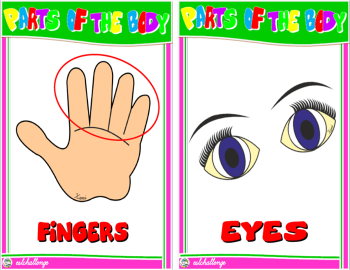

Parenting tips
10 Tips for Parents
- Play Time: Always remember to set aside at least 15 minutes of daily play time with your children. This should be uninterrupted time, with no phone or TV or any other distractions. Your children will transition better and act out less knowing you are going to play with them at some point every day. Try and have it at the same time everyday so it is part of their daily routine.
- Attachment & Bonding: Your children need to feel close to you and you close to them. Make sure you share special moments like reading to your kids or singing with them. Create a bedtime routine where you can rub their back or tell stories. Having a loving attachment with a beloved caregiver helps them feel secure and safe building trust with you, and lets them know they will always get their needs met by you.
- Give praise: Kids thrive on praise (just like adults) so be sure to always tell them when they have made you happy or have done something that is helpful or kind. Label specifically what it is vs. saying “good job.” This will motivate them to do it again!
- Age Appropriate Expectations: Read up on the developmental stage of your children so you know what to expect from them. It sets your children up for failure and frustration if you are expecting them to do more than they are capable of. Try not to compare your children to your friends’ or relative’s children, they are developing at their own pace, and you need to match your language and tasks accordingly.
- Have a Routine: Children thrive on routines in their day (that is why every school and preschool always has a daily routine). Make sure that you have a daily routine, especially for meals, naps, play and bedtime. Your life will be much easier depending on this schedule also. If you have a set routine, being flexible for unexpected events will flow smoother as long as you are talking about it to the children. e.g. “Today is a little different than usual because we have Aunt Jane with us, so we will be going to bed a bit later than normal.”
- Safety: Remember to look around your house from the child’s perspective to remove any safety hazards. Sometimes it will be necessary to remove some of your furniture until they have become steadier on their feet and less curious. Keep in mind that safety does not just mean physical safety, but it also means emotional safety as well. Keep your children free from violence, scary TV and media. Remember that what may not be scary to an adult could cause severe anxiety in a child.
- Positive Communication: Remember to say things in the positive form avoiding using the word No! E.g. “Use walking feet” vs. “no running” and “I need you to sit on your bottom,” vs. “no standing on the chair.” If you are a yeller, try whispering to get your point across, sometimes this has an equally strong effect. Think of how you would feel if a neighbor or a friend was yelling at your child and ask yourself why it is any different when you yell at them. Make eye contact with your child and always squat down to their level to show them your loving respect.
- Set Limits: Without limits, your children will crave them and act out in negative ways. Be clear with your child and give them the opportunity to change their behavior before you take action. Follow the 3 steps in setting limits to ensure you are not begging or bribing your kids to comply.Step 1: State your expectation e.g. “I need you to keep the water in the tub.” Step 2: State your expectation with a consequence e.g. “Keep the water in the tub, or you will be finished.” Step 3: Follow through. “Ok, you are showing me you are finished,” or “thank you for keeping the water in the tub.” Some kids may need a reminder in between step 2 + 3, but no more than one warning or you may end up begging them again!
- Offer choices: Keep in mind that children have very little power or say in their day. The more choices you offer the more they will feel some control in their life and test your limits less. Keep your choices simple, never including punishment as one of the choices. E.g. “You have a choice, you can carry your coat or put it on, but you have to take it with you.”
- Use Humor: Remember parenting is tough, but so is being a kid. If you can lighten up and tell a joke or make a joke out of a difficult situation, you can sometimes diffuse the energy or just make your self feel better.
Dear Parents,


STORY OF THE WEEK:
https://www.youtube.com/watch?v=HqifY7ium4Q

More Stories we will be reading:


Rhymes and songs of the Week:
''Open, Close''
https://www.youtube.com/watch?v=E_VcSQn73do&list=PL490808893E77AA4C&index=3

''Baby Beluga''
THEME:

We will continue working with parts of the body.




One of the most important activities we do in our preschool class is developing Fine Motor Skills.
Children who have issues with fine motor skills have a hard time developing strong muscles in their hands and wrists.
Fine Motor Development:Tips for Parents
- Let your child struggle a little to learn new fine motor skills.
Don’t make the mistake of doing too much for your preschooler. Children won’t learn to zip up and snap pants or put on shoes if parents swoop in to do those tasks, because it’s easier or faster for parents. Take time to teach and let your child learn new tasks one at a time. Another way parents can allow kids to learn in small steps is to share the task with the child. A parent can put on one shoe, while the child puts the other shoe on. - Give encouragement and empathy.
While teaching new skills to children, offer encouraging statements, such as, “You’ll get it. It just takes practice and hard work.” When children get frustrated, instead of rescuing kids, offer empathy by saying something such as, “It’s hard to learn new things, isn’t it?” Learning new skills builds confidence and resilience in preschoolers and can improve behavior too. - Focus on the process, not the product. Let go of perfection and let your child have fun along the way. If your child puts on both shoes, but on the wrong feet, focus on the accomplishment first. Don’t worry about your preschooler cutting straight lines. The goal is that he or she cuts and develops muscular strength and coordination first; the straight lines will come later.
Fine motor development is crucial for preschoolers, but the good news is there are plenty of artsy, fun and age appropriate ways to help children strengthen their tiny hand and finger muscles.
Fun Activities for Preschoolers: Developing Fine Motor Skills
- Cutting with Child Safety Scissors:
Small, child-sized scissors with blunt ends can be purchased at discount or school supply stores. Patterned craft scissors found in the scrapbook supply section also work well and are fun for children to use. Allow children to cut old magazines and newsprint at first, because both are lightweight papers that cut easily. As your child gains strength, offer him or her recycled tagboard, such as cracker boxes, to cut. Consider creating a cutting box, where you keep items that your child can cut. Add a drawing or photo of scissors to the outside of the box as a visual reminder to your child that the items in the box are the only items that are okay to cut. If you’re concerned that your child will cut other items, keep scissors put away until you can supervise cutting activities. - Bath Time and Water Table Play:
By adding a few select items to the bathtub, or a water table, parents can help children develop fine motor skills. Purchase an inexpensive turkey baster and recycle medicine droppers for children to experiment with while playing in water. Preschoolers will have fun learning the science of how the items work and will also be developing hand strength and coordination.
A plastic toy tea set with a tea pot that children can pour from and cups for pouring into is another great water tool that engages small hand and finger muscles. Measuring spoons, measuring cups, and strainers from your kitchen are other ideas, as is a two-foot length of clear plastic tubing (found at hardware stores or in the fish tank section of a pet store). - Play Dough and Play Dough Tools: Add some simple, yet carefully chosen, tools alongside play dough and kids will stay busy for a long time, as well as develop fine motor coordination. Homemade play dough is usually softer and can be created in different colors and textures. From your home or a store, gather the following: a plastic knife, dental floss, a plastic garlic press, a plastic pizza cutter, and a small rolling pin. A cylindrical wooden block or a small, hard plastic cup both work great as a substitute rolling pin. Dental floss can be used to cut play dough. When it’s gripped tightly at each end, it can be pulled through the dough to slice it!

Parents
often ask me if I need anything. If you
would like to help, the items listed below are always needed and appreciated
throughout the year. Thank you!
*band-aids
*paints
*Sticker
dots
*Food
coloring
*Stickers
*Shaving
cream
*glue
sticks
*all
kinds of pasta
*rice
*prizes *Hair Gel
 EARLY CHILDHOOD INDEPENDENCE CELEBRATION
EARLY CHILDHOOD INDEPENDENCE CELEBRATION
Ms. Andrea is requesting parents to send empty milk cartons to school for motricity class.
DPTO MOVIE!!!
2016-2017 EC Health Fair @ Discovery School
Our DPTO will be hosting its first activity for the 2016-2017 school year by presenting the movie “”Storks” IN ENGLISH!! This movie will be presented at Novacentro next Saturday, October 1 at 10:00 a.m. The price of the ticket is L250 which is includes the entrance to the movie AND a combo of your choice. Tickets are available with Ms. Ruth (our receptionist).
Purchase yours yesterday!
Purchase yours yesterday!
There are an only 135 seats available!!
We know that this event will have a magnificent turnout with the support of our families!
Date: Friday, October 14th
Time: 8:00-1:00 p.m
Place: 4th grade classroom
We will have Optica Popular and Dra. Sandra Noguera doing visual and dental screening for our Early Childhood students. This service is free of cost. Permission slips allowing this screening to be done will be sent home next week.

